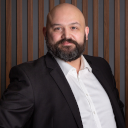Routine on autopilot. That is, how to gain control of your daily routine at work
Automating simple daily activities is the key to saving time and, consequently, working more efficiently. Recently, the employees of the Community Self-Help Center in Mosina - a day care center for adults with disabilities, for whom the most important thing was:
- Improve communication
- Collection of participant history
- Ability to verify how the team worked
- Ability to generate an attendance statement
- Ease of use
- Ability to make quick changes and corrections
- Digitization of leaves
How did we achieve the goals we set?
- We created one universal "daily" template
- We divided employees into groups
- We set up cyclic repetition of tasks for participants
- We designed a path that determines what an employee can edit
- We built dedicated dashboards for each employee
- We created a shared calendar and forms for specific scenarios
- We created a guest (parent/caregiver) account for each participant so they can access all information and activities

Improving communication - how did we do it effectively?
When thinking about improving communication, many people take instant messaging under the microscope first. Some of them are simple and effective, but they also have one particular drawback, and that is an excess of messages. This makes it difficult to find in long conversations information that is really relevant and needed for the here and now. The alternative? Daily tasks created automatically, giving a common space for conversation.
Separating specific elements of the day into subtasks systematized the work and allowed individual employees to plan their day more efficiently. The result? Easier access to information (which from now on is available not only to employees, but also to caregivers) and time savings (reducing the number of inquiries made when picking up a participant from the facility). It has also made things easier for the manager, who from now on has constant access to key data on the work of the teams.
History - why is it so important?
History is the element that allows you to trace actions, see what happened, analyze certain scenarios, and as a result - better prepare for current and upcoming events. In an organization working every day with (mostly) the same people with different disabilities, it is more difficult to organize work than in a typical office. History makes it easier to decide who to delegate more challenging participants to, and who has had experience with the people in question.
This is why the implementation of day-specific tasks made sense. It allows you to get back to the date you are interested in faster, and the communication itself in such task is geared towards conveying specific information.
Without getting up from your chair, you can see a wide variety of items: a list of participants who were being activated by the physiotherapists, who was helping in the kitchen studio, and who was participating in the activities of the art studio. What's more, the platform allows you to verify in real time what tasks are being carried out by employees on a given day, for example, in the form of a very clear board.

Reports are no different. They even turned out to be indispensable for the manager of the Community Self-Help Center, who regularly prepares attendance summaries (they are required for billing). After implementing the template, it is simple to generate a report containing all the necessary data and simply make a summary. In addition to saving time, this eliminates the risk of mistakes.
Simply and effectively
The digitization of the organization was the perfect moment to discuss the working method as a team and to unify and establish a common way of doing things. It is hard to find a better basis and introduction to the configuration of permissions.
Thanks to it, it is clear who can make certain changes and at what point in the life of a task. The first version of the process is never the best - that's obvious, so we did tests together, and each employee commented on his part of the task. Minor changes to the template helped develop a tool that is useful for every person interacting with the participants.
All this is especially important when a new person joins the team. From the perspective of a new employee, the whole thing allows you to understand the structure and present the system of operation in a clear way.
What does Olga, the center's new occupational therapist, think about this?
With Fortask, it was much easier to deploy to the entire team. All the necessary information (such as employee notes) can be found in just a moment. Quick exchange of information is something that everyone should care about in special times.
Learn about the other opinions of the staff of the Community Self-Help Center in Mosina:
Anna, medical caregiver:
I recommend Fortask because it has made real changes in the organization of work at our center. Now everything is in one place (from the calendar to the participant's daily schedule).
Michael, caregiver:
Fortask, a tool used by the staff of the Community Self-Help Center in Mosina, has systematized the activities carried out at the center. It allows planning the work of both individual employees and the center as a whole. Thanks to the calendar function, it is possible to view current and future activities. A built-in system of communication and notifications, introduced comments or channels to tasks allow to be up-to-date with all the necessary information both for employees and caregivers of participants.
Digital Vacation Applications
The introduction of the platform into the daily rhythm of the organization gives room for further development. And we went one step further, implementing a dedicated design for vacation requests, taking into account all the scenarios stipulated by the regulations.
Along with it, we created a calendar. Every employee has access to it. In just a few seconds, you can check your planned days off and match your plans with the existing ones. It's easy and transparent.
An additional advantage? A clear graphical form that allows the manager to make decisions faster.
How long did it all take and what did it look like?
The idea - everything starts with it. It was no different in this case, either. The initiative to arrange the work became a necessity. The idea was born, and the first discussions identified the challenges and got the answer to whether they could be solved with the tool.
The first draft with a manually created task, the outline of the first template, discussions about the form of tasks, dashboard views - it took only a week for the first, test template to be put at the disposal of a small group of employees of the center.
The very next day, changes appeared, then another and another. The template evolved, grew, to eventually go to all employees for testing. More changes and subsequent collaborative meetings helped develop several time-saving concepts. Eventually, it was time to decide on the direction of the changes.
Another month, more pieces of the puzzle - with the beginning of September we implemented vacation requests along with a dedicated calendar for employees.
Two months of work allowed us to get a better idea of the specifics of the work, the immensity of the effort and the heart that the staff puts into working with the participants. As a result, we are confident that the configured solution works and is fully usable for all employees of the Community Self-Help Center.
What does Jacob, the manager of the facility, think about this?
Today's work system is dynamic and demanding, and that means you have to move with the times. The paper-and-pen approach or simple email correspondence has become ineffective. Working with people with disabilities, these dynamics are growing even more, with many new situations emerging that need to be responded to quickly. Thanks to the tool, the standard processes and model of our work have been able to prioritize and create a clear structure. New tasks are easily assigned to specific people. Even being out of the office, there is not the slightest problem with decision-making and the current flow of information. Also noteworthy is the possibility for the caregiver to "preview" the day - this is convenient for each party and gives, for example, the parent a sense of control over what is happening with his child. The staff, on the other hand, can focus on other important activities, thus saving time.
Importantly - it didn't take us long to launch the process. From the very beginning we knew what effect we wanted to achieve, and this made the implementation work much easier. The cooperation from the very beginning was exemplary. Without the support of Fortask's implementation team, we would not have achieved our goal, and certainly not in such a short time.
Future plans
And it's not over yet. There's really a lot going on at this particular Community Self-Help Center. Already in the testing phase are intuitive schedules for physiotherapists and a project in which it will be possible to record various medical events (from the administration of medications, to events related to epilepsy). All available not only to employees, but also to all caregivers. There are also other projects in the queue, such as employee suggestions, performance appraisals, and a purchasing template.



